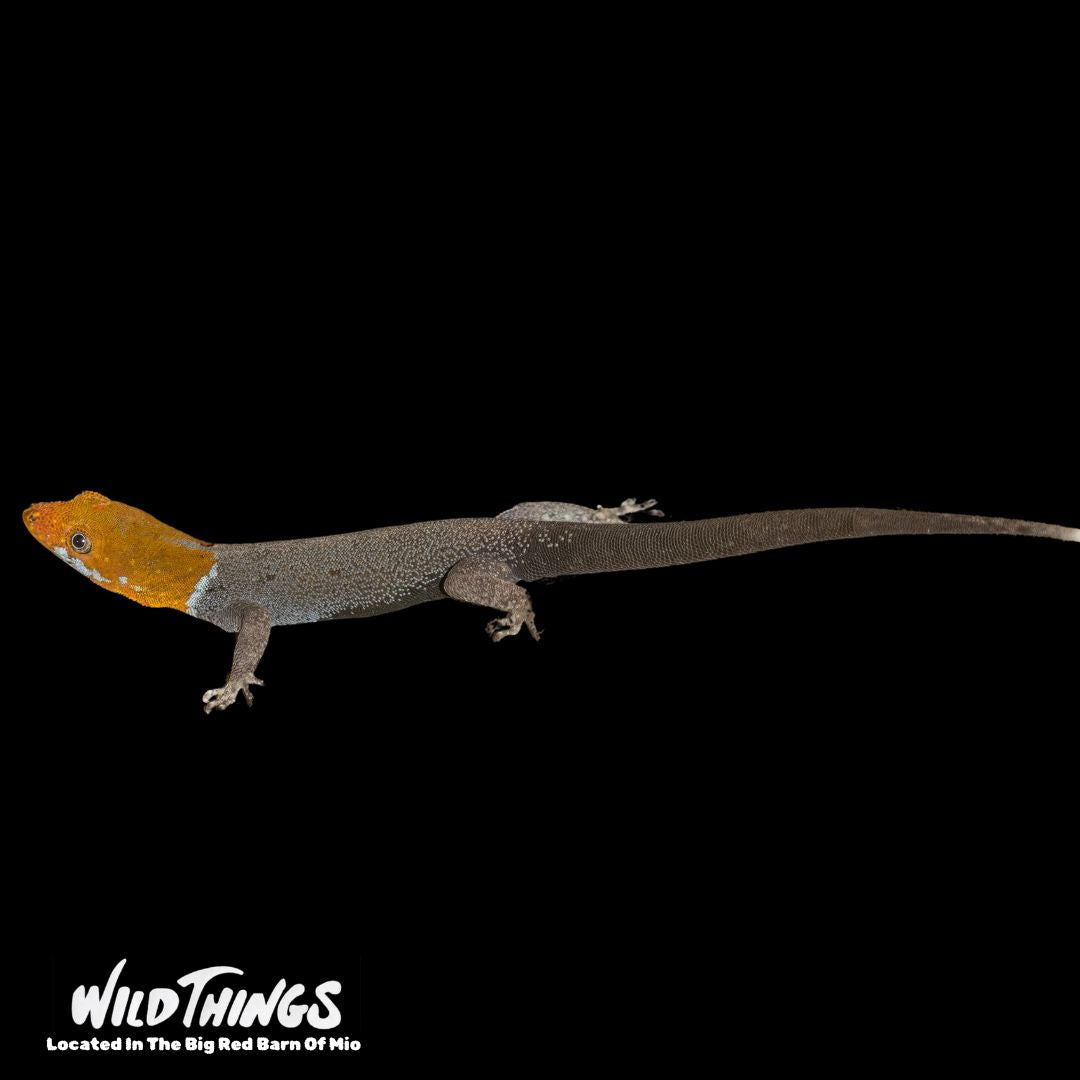AuSable River Outdoors
Juvenile Yellow Headed Gecko
Juvenile Yellow Headed Gecko
Couldn't load pickup availability
Species: Yellow Headed Gecko
Scientific Name: Lygodactylus kimhowelli
Origin: East Africa
Lifespan: Little is known about their natural lifespan, although an expected lifespan of 5 to 10 years is not unreasonable.
Size: Rarely exceeding 3”
Enclosure Type: They can be housed in traditional glass aquariums, but it may prove more difficult to conduct day to day maintenance without a front opening cage.
Enclosure Size: Small adult size does not necessarily mean these geckos should be placed in cramped quarters. A minimum size for an enclosure should be at least the size of the ZooMed Medium Naturalistic Terrarium, although if space allows, they do excellent in larger size terrariums.
Substrate: Substrate for these geckos depends on how you are setting up their cage. A planted, naturalistic vivarium not only looks the best, but will also meet your geckos needs admirably as well. In a naturalistic vivarium, expect to use a combination of hydroton balls for drainage, polyfoam as a divider between your drainage and planting layers, and Ecoearth and Moss Growing Substrate to provide a nutritious soil mix for your live plants. In a cage with artificial plants, a substrate that holds humidity and is easy to clean is ideal. This includes cypress mulch, orchid bark, Ecoearth, or other forms of compressed coconut husk. It doesn’t hurt to experiment with several types of bedding before deciding on a type you prefer.
Décor: When designing the cage for your gecko(s), keep in mind their natural behavior. As small, bite sized geckos, they are naturally shy and prefer numerous hiding places and foliage in their cage. They love to climb, and every opportunity should be taken to provide them with plenty of vertical hiding places. Use of Cork Rounds and Bamboo Hollows is highly recommended, as they provide similar hiding opportunities as the round tree branches they would hug in the wild. When they feel threatened, these geckos will immediately retreat to the opposite side of whatever surface they are on, and offering several cylindrical objects for them to hide on in their cage will help them follow their natural instincts. Not every surface in the cage needs to be a cylinder, however, and use of Cork Flats, Grapevines, Magnetic Ledges, and other wood products will add visual interest to your cage as well as offer hiding options for your geckos to choose from. In addition to wood products, serious consideration should be given to providing Live Plants or other foliage options for your geckos to hide on. In addition to being aesthetically pleasing, live plants also increase relative humidity in the cage, providing a beneficial microclimate for your geckos within their leaves. Since these little guys won’t eat the leaves, you can use just about any plant you desire within your cage. However, it’s probably best to use plants that can take tropical temperatures and moisture levels. Tropical Vines, magnetically attached Jungle Vines, and naturalistic fake plants can all be included as well.
Water: A dish with fresh, clean water provided daily.
Temperature: Basking spot temperatures can and should reach into the low 90s, while the coolest side of the cage can drop down into the low 70s. At night, if temperatures in your home drop below 70 degrees, it is recommended to use some form of nighttime heating. A 40 or 60 watt Nightlight Red bulb should provide plenty of heat; keep in mind that the cage needs to be about 75 degrees at most at night
Humidity: Use of a hand spray bottle or pressure sprayer is one way to add humidity to the air. A ZooMed Reptifogger is another way to add humidity and is highly recommended both for its humidity increasing abilities and because it just plain looks cool. If you want a higher quality misting system, use of a Mist King may be what you’re looking for. In the end, it doesn’t matter so much how you add humidity to the cage, it just matters that additional moisture and humidity is added at least twice throughout the day.
Lighting: Being devout sun worshippers, these little geckos need lots of light and UVB. There are two methods that can be used to provide these things. The first and most traditional method is with fluorescent strip lighting, such as a ZooMed Reptisun bulb, used in combination with a basking light, such as a ZooMed Basking bulb or Halogen Light. In smaller cage setups, this is usually the best way to go, as you can use lower wattage basking bulbs to ensure you do not overheat the cage.
Type Of Diet: Carnivorous
Types Of Food: Small crickets, fruit flies, small mealworms, waxworms, small silkworms, reptiworms, and hornworms.
Feeding Schedule: Adult geckos generally thrive when fed three to five insects twice a week
Supplements: Supplementation with a high-quality reptile multivitamin in combination with a high-quality reptile calcium (containing D3) is highly recommended. Calcium should be offered about every feeding for egg-laying females, and every other feeding for non-reproductive animals. Multivitamins can be offered weekly, or as often as is recommended on the label.
Share

